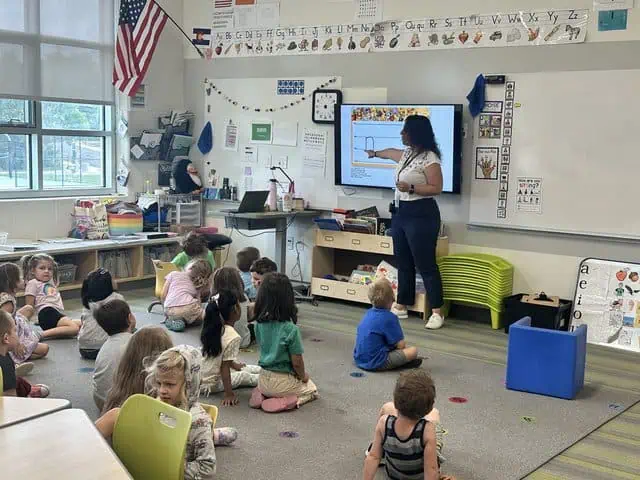
In Boulder County, the promise of public education as the great equalizer is challenged by the stark realities of school funding, economic disparity and educational inequities.
Financial barriers often prevent students from fully accessing educational resources. Consider Maria, a high school junior whose family’s financial constraints mean she can’t afford the fees for an AP exam. Or Ethan, a curious elementary student whose progress in reading is hindered by his family’s inability to pay for after-school tutoring. These stories illuminate the critical role of equitable access in education and underscore a systemic issue that affects our entire community.
As homeowners in our community see their property values and tax bills increase, many may assume the additional funds are flowing into our public schools. They’re not wrong — but increases in local property taxes don’t equate to increases in funding for Boulder Valley School District (BVSD). The reality of how public school funding works is more complex. And the gap between available funding and the needs of each student means families often have to shoulder the extra costs of resources.
The high cost of living in Boulder County, alongside increased rates of poverty and homelessness, contrasts sharply with the area’s perceived affluence. This means many BVSD families — especially those from marginalized communities — face financial pressures that directly impact their children’s educational opportunities.
From school field trips and advanced course test fees to extracurricular activities and career exploration opportunities, these costs often fall on families, adding financial stress and limiting student participation.
More than 5,300 children live in poverty in Boulder County (a 13% increase compared to pre-pandemic levels) which means a family of four is living on $31,200 per year or less. The threshold for BVSD families to qualify for the Free and Reduced Price Meals program — which impacts school fees, transportation and guides individual school funding — is considerably higher at $57,720. But it’s still half the estimated $107,462 cost of living, or self-sufficiency standard, for a family of four in Boulder County.
Today, 25% of BVSD students are enrolled in the Free and Reduced Price Meals program. And this may not represent the full need, because school meals are currently free through the Healthy School Meals for All program, passed by Colorado voters in November 2022. While significant, the nearly 7,000 students enrolled in the program represent only a fraction of those whose families are struggling to make ends meet, as many more do not meet the self-sufficiency standard.
These financial challenges are compounded by stagnant school funding in Colorado and potential ballot measures in the November 2024 election that could further reduce public school resources.
Although the new state funding formula — designed to ensure equitable funding — will increase the the district’s budget by 0.5%, it fails to adjust the base level of funding per pupil.
As it stands, the school finance formula determines the total amount of funding each school district receives. The funds come from a blend of local (property taxes and vehicle registrations) and state sources. Local sources are considered “first in,” meaning they are used first to fund the “total program” amount set by the school finance formula. State equalization funds then make up the remainder.
The amount contributed from the three sources varies according to local assessed property valuation. As property taxes increase in Boulder County, due to a fixed mill levy (27.0 mills for BVSD) and rising assessed property values, the amount provided by the state decreases.
A 2013 study found that an additional 35% on top of base level funding was needed to ensure students eligible for the Free and Reduced Price Meals program met standards. A forthcoming 2025 adequacy study from the State of Colorado will determine the resources needed today for students to meet standards.
Impact on Education was founded in 1983 to fill the gaps left by school funding mechanisms. As the nonprofit supporting BVSD, we understand that providing equitable educational opportunities is more than a mission — it’s a necessity. Our role extends beyond mere advocacy; we actively partner with BVSD to bridge the gap between available resources and student needs.
From early childhood education and college and career readiness to educator grants and mental health support, our work supports students of all ages and stages of learning and adapts to address inequities in education. Each program and investment helps ensure marginalized students and those from low-income families — just like Maria and Ethan — have the same learning opportunities as their peers.
We believe public education can help students reach their potential and that every student should have access to excellent and equitable education.
Members of our community play a crucial role in providing students across BVSD access to the resources and opportunities they need to succeed. This approach is vital in a community where economic disparities could otherwise dictate educational outcomes, perpetuating cycles of poverty.
To bridge the gap between BVSD students this year, Impact on Education seeks to raise more than $2.4 million in the 2024-25 school year. With your support, we can ensure that public education is the great equalizer it was always meant to be. Please join us: impactoneducation.org/give
Allison Billings is the executive director of Impact on Education, a nonprofit foundation providing community funding and resources to meet critical needs and eliminate opportunity gaps in the Boulder Valley School District.
